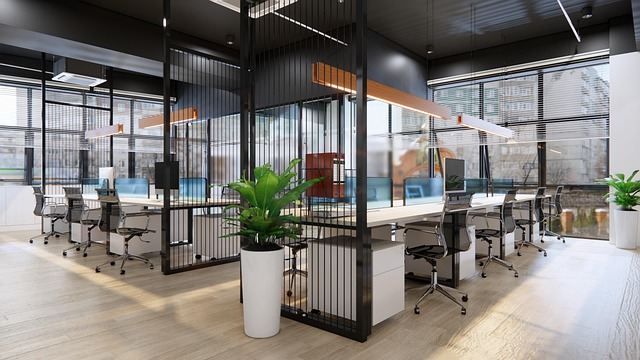Introduction
Vlogging—short for video blogging—has evolved from bedroom monologues on cheap webcams into a dynamic form of storytelling, marketing, and personal branding. It first grabbed traction in the late 2000s, riding on the wave of YouTube’s rise. Since then, it’s weathered major platform shifts, content fads, and algorithm updates. Through it all, vlogging stayed relevant because it offered something timeless: a direct human connection.
In 2024, that connection is still key—but how it’s built is changing. Platforms now push content that holds attention, sparks conversation, and drops regularly. Surface-level uploads won’t cut it. Behind the scenes, creators are using smarter tools and tighter strategies to keep pace, and the ones who adapt quickly are the ones who thrive.
For content makers, the message is simple: stay sharp, stay nimble, and understand the new rules. The game isn’t over. It’s just playing faster.
More Natural Light
Open floor plans break down barriers. With fewer interior walls, natural light can move more freely from one end of the space to the other. The result: brighter rooms, lower utility bills, and a lot less time spent flipping light switches during daylight hours.
Better Flow and Movement
Open layouts are built for momentum. Whether you’re chasing toddlers, hosting friends, or juggling dinner and homework at once, flowing from one zone to another just makes sense. No more bumping into corners or zigzagging around walls.
Increased Sense of Space
When you’re not boxing off rooms, even a modest square footage can feel roomy. Sightlines stretch, ceilings feel taller, and the whole home breathes a bit easier. It’s a small trick that delivers big impact.
Greater Design Flexibility
Without rigid walls, your space keeps up as your life changes. A corner that works as a play area today can pivot into a home office tomorrow. It’s flexible, functional, and built for adjustment, not permanence.
Noise Carries Easily
In an open-concept setup, every sound becomes part of the soundtrack. No walls means no buffers. Cooking, Zoom calls, the TV, and kids’ voices all blur together. If you need quiet for vlogging or editing, prepare for headphones, careful scheduling, or soundproofing hacks.
Limited Privacy
Without distinct rooms, it’s hard to find space that feels truly yours. Whether you’re working from home, filming a vlog, or hosting guests, you’ll notice fast that open layouts leave you exposed. Even a simple phone call isn’t really private anymore.
Design Fatigue
Open floor plans look good in photos, but they can wear you down. One mismatch in style pulls the eye. Instead of decorating room by room, you’re decorating one big canvas. If you like to switch things up often, this can become a chore.
Clutter is Always on Display
There’s no hiding anything. That pile of mail, those cords, the laundry you meant to fold—they all live in plain sight. Visual calm takes constant work. A bit of mess becomes a distraction fast, especially if you’re filming in the space.
Zoning with Furniture
Open layouts need structure. You don’t need walls. Just use rugs, sofas, shelves, and lighting to mark off areas. A couch facing away from the kitchen sets a living room boundary. Pendant lights over a table give focus to a dining zone. It’s simple stuff, but it works.
Consistent Color Scheme
Too many colors can make even the cleanest space feel chaotic. One palette across your zones keeps things calm and connected. Think neutrals with one accent tone, or cool shades with warmer textures. This guide breaks it down: Creating a Cohesive Color Palette for Your Entire Home
Layered Lighting
One overhead light per room doesn’t cut it. You want a mix: ceiling fixtures for general light, task lamps where you work or read, soft accent lights to set the mood. Dimmer switches help if you want one light to pull double duty.
Storage Solutions That Stay Stylish
Bins and boxes are fine, but some storage can step up. Ottomans with hidden space, sideboards with sleek lines, built-ins that look like part of the design. These hide the mess and still look great.
Texture and Materials
Flat spaces feel lifeless. Mix it up—leather next to linen, rough wood on smooth metal. You don’t need a lot of color when texture tells the story. Just don’t overdo it. Keep balance, not clutter.
Thinking about knocking down that wall? Hold on. Before you commit to an open concept, ask yourself a few essential questions. How do you actually use your space day-to-day? Do you need quiet zones to focus or take calls? Are you okay with your kitchen mess being visible 24/7? A more open layout sounds great in theory—until you realize you can’t watch TV while someone’s blending a protein shake two feet away.
Open concept can absolutely work. It’s ideal for entertainers, families who like to keep an eye on everything, or smaller homes that need to feel bigger. But it’s not for everyone. If you value separation, sound control, or simply want a cozy nook or two, full openness might just stress you out.
Bottom line: trends come and go. Your lifestyle doesn’t. Design for how you live, not for what’s trending online. The best space is the one that actually makes sense for you.
